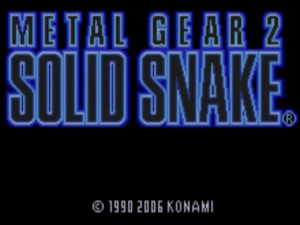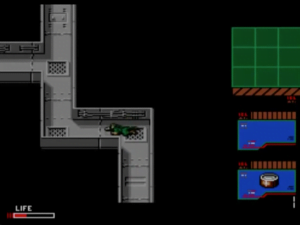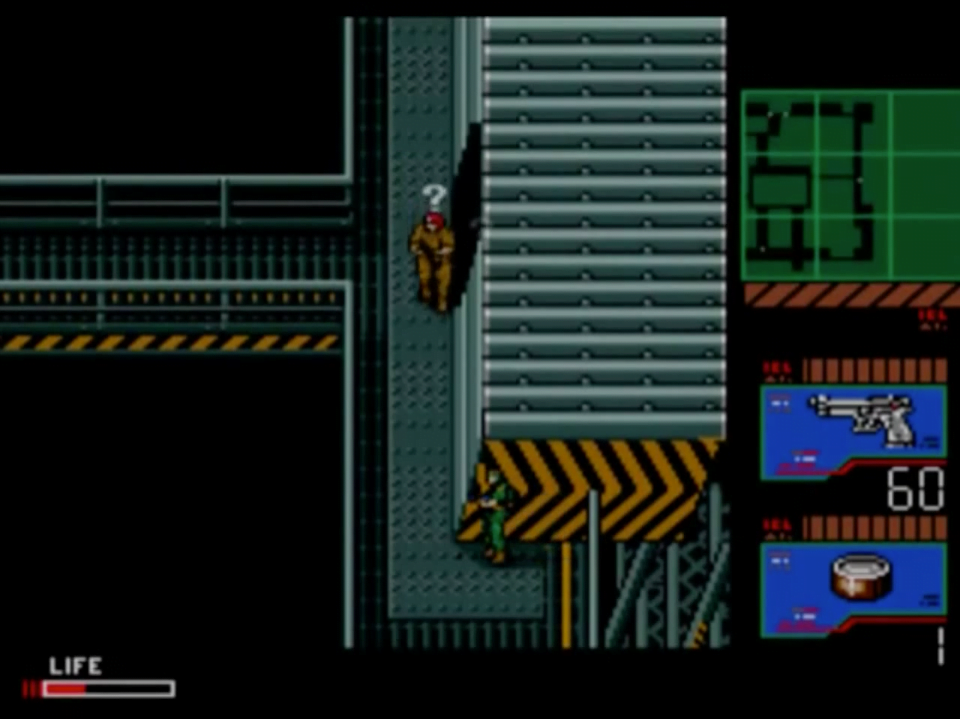To: Sean Gandert
From: Blake Foley
Subject: The Phantom Sequel
Dear Sean,
 As we head into Metal Gear 2: Solid Snake, I thought it would be worthwhile to take a brief look back at its history. Sequels generally follow two trajectories. They’re either A) a near carbon copy of the original with a new story, some new characters, and some minor gameplay changes (for instance, Bioshock and Bioshock 2) or B) something that takes elements from the original, but expands it into something bigger and more ambitious (Assassin’s Creed and Assassin’s Creed 2). Metal Gear actually got to have it both ways.
As we head into Metal Gear 2: Solid Snake, I thought it would be worthwhile to take a brief look back at its history. Sequels generally follow two trajectories. They’re either A) a near carbon copy of the original with a new story, some new characters, and some minor gameplay changes (for instance, Bioshock and Bioshock 2) or B) something that takes elements from the original, but expands it into something bigger and more ambitious (Assassin’s Creed and Assassin’s Creed 2). Metal Gear actually got to have it both ways.
Metal Gear’s creator, Hideo Kojima, had already moved on to other projects when Konami made the decision to port the original Metal Gear to the Nintendo Entertainment System and release the game in North America. Despite the poor quality of the NES version, it brought the game to an entirely new audience, and with this made Metal Gear successful enough to warrant a sequel. Hoping to capitalize on Metal Gear’s sales in the West, Konami started production on Snake’s Revenge for the NES. The game was released in 1990 in North America and Europe. Hideo Kojima was not involved, and Snake’s Revenge was never released in Japan.
 But Japan did get a new Metal Gear game that year, it just wasn’t Snake’s Revenge. The story, as Hideo Kojima tells it, goes like this: Having never planned for a sequel to Metal Gear himself, Kojima wasn’t aware that Konami had one in production. While riding the train home after work, he was approached by one of the people making Snake’s Revenge. The developer told Kojima about the project, but also confessed that it would never be a true sequel to Kojima’s game and asked him to make the real Metal Gear 2. Kojima immediately started thinking about the events that would follow the original game’s conclusion, and had a new story figured out by the time he reached his front door. His bosses at Konami greenlit the game the next day and a new MSX2 Metal Gear began production.
But Japan did get a new Metal Gear game that year, it just wasn’t Snake’s Revenge. The story, as Hideo Kojima tells it, goes like this: Having never planned for a sequel to Metal Gear himself, Kojima wasn’t aware that Konami had one in production. While riding the train home after work, he was approached by one of the people making Snake’s Revenge. The developer told Kojima about the project, but also confessed that it would never be a true sequel to Kojima’s game and asked him to make the real Metal Gear 2. Kojima immediately started thinking about the events that would follow the original game’s conclusion, and had a new story figured out by the time he reached his front door. His bosses at Konami greenlit the game the next day and a new MSX2 Metal Gear began production.
In the West, Snake’s Revenge was our follow-up to Metal Gear and there was no reason to suspect otherwise. Snake’s Revenge looked, sounded, and played like Metal Gear. Most of us didn’t realize anything was up until Metal Gear Solid was released in 1998, referencing an MSX2 sequel we’d never heard of while completely ignoring the NES game we’d come to know and, if not love, certainly accept as adequate. Kojima has been quoted saying that Snake’s Revenge is a good game in one interview and a bad game in another. I think the truth is that it is neither. It sticks close enough to the original that it doesn’t offend fans, but it brings very few new things to the table. I think the most interesting thing about Snake’s Revenge is that in 1990 it probably would have won the Pepsi Challenge of “Which of these two games is Metal Gear 2?”
 In 2006, Metal Gear 2: Solid Snake was finally localized and included in the Subsistence release of Metal Gear Solid 3, giving many fans a look at the lost sequel for the first time. Kojima’s true follow-up may share some core DNA with the original, but it quickly becomes evident he was trying to do a lot more with this one. Metal Gear 2: Solid Snake signals where the franchise was headed, rather than where it had been.
In 2006, Metal Gear 2: Solid Snake was finally localized and included in the Subsistence release of Metal Gear Solid 3, giving many fans a look at the lost sequel for the first time. Kojima’s true follow-up may share some core DNA with the original, but it quickly becomes evident he was trying to do a lot more with this one. Metal Gear 2: Solid Snake signals where the franchise was headed, rather than where it had been.
-Blake




